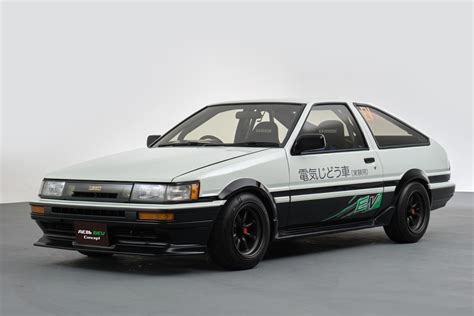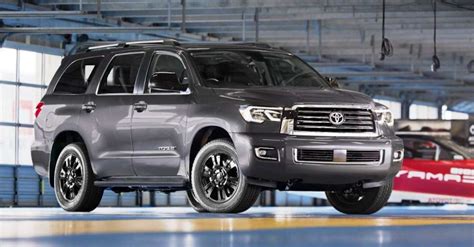
Chrysler is embarking on an ambitious, electrified revival, betting heavily on its flagship minivan, the Pacifica, and a future all-electric crossover to redefine its presence in the automotive market after years of dwindling sales and a shrinking model lineup. The company aims to leverage its minivan heritage while embracing electrification to appeal to modern consumers and remain relevant in an increasingly competitive landscape.
Chrysler, once a dominant force in the American automotive industry, has faced significant challenges in recent years. Its product line has been reduced to a single minivan model, the Pacifica (including its plug-in hybrid variant), and the aging 300 sedan, which is slated to end production. However, under the umbrella of Stellantis, the multinational automotive manufacturing corporation formed in 2021 from the merger of Fiat Chrysler Automobiles and PSA Group, Chrysler is receiving renewed investment and a clear mandate: to reinvent itself as a forward-looking brand centered around electrification and innovative technology.
The centerpiece of this revival is the Chrysler Pacifica. While the minivan segment has seen its overall market share decline as consumers flock to SUVs and crossovers, the Pacifica has managed to maintain a strong following, particularly among families seeking practicality, comfort, and versatility. Chrysler is capitalizing on this existing strength by offering the Pacifica with a plug-in hybrid powertrain, providing a bridge to full electrification and appealing to environmentally conscious buyers. The Pacifica Hybrid offers a compelling combination of electric driving range for daily commutes and gasoline-powered flexibility for longer trips.
Beyond the Pacifica, Chrysler’s future hinges on a new all-electric crossover, previewed by the Chrysler Airflow concept vehicle. While the Airflow concept has been shelved, the company is committed to launching a production electric vehicle (EV) in 2025, signaling its entry into the rapidly growing EV market. This new EV is expected to incorporate advanced technology, a sleek design, and a focus on connectivity and user experience, aligning with Chrysler’s vision of becoming a leader in sustainable mobility.
The transition to electric vehicles represents a significant undertaking for Chrysler. The company is investing heavily in research and development, battery technology, and manufacturing infrastructure to support its electrification plans. Stellantis, as a whole, has committed billions of dollars to electrification, and Chrysler is poised to benefit from this investment. The success of Chrysler’s EV strategy will depend on several factors, including the availability of charging infrastructure, consumer adoption of EVs, and the ability to compete with established EV manufacturers like Tesla and emerging EV brands.
Furthermore, Chrysler’s revival strategy extends beyond just electric vehicles. The company is also focused on improving the overall ownership experience, enhancing its dealer network, and strengthening its brand image. Chrysler aims to create a more personalized and seamless customer journey, from online research to vehicle purchase and service. This includes investing in digital technologies, offering flexible financing options, and providing exceptional customer support.
The challenges facing Chrysler are considerable. The automotive industry is undergoing a period of rapid transformation, with new technologies, changing consumer preferences, and increasing competition. Chrysler must overcome its recent struggles and demonstrate its ability to innovate and adapt to succeed in this dynamic environment. However, with the backing of Stellantis, a clear electrification strategy, and a renewed focus on the customer experience, Chrysler has the potential to stage a successful comeback and re-establish itself as a relevant and respected automotive brand. The brand’s future success depends on executing this ambitious plan effectively and delivering compelling products that meet the needs of modern consumers.
Detailed Analysis and Context
Chrysler’s history is intertwined with the very fabric of the American automotive industry. Founded in 1925 by Walter Chrysler, the company quickly rose to prominence, challenging established giants like General Motors and Ford. Chrysler introduced innovative engineering and design features, including the first mass-produced car with hydraulic brakes and the revolutionary Airflow design of the 1930s. The company played a vital role in the war effort during World War II, producing tanks and other military vehicles.
In the post-war era, Chrysler continued to innovate, introducing iconic models like the Chrysler 300 “letter series” cars, which were renowned for their performance and style. The company also expanded its product line to include a wider range of vehicles, from compact cars to luxury sedans. However, Chrysler faced increasing competition from foreign automakers in the 1970s and 1980s. The company struggled with quality issues, financial difficulties, and a lack of innovation.
In the 1980s, Chrysler was on the brink of collapse, but it was rescued by a government bailout and the leadership of Lee Iacocca, who revitalized the company with the introduction of the minivan. The Chrysler minivan became a runaway success, creating a new segment of the automotive market and helping to restore Chrysler’s profitability. However, Chrysler continued to face challenges in the following decades, including further financial crises and changes in ownership.
In 2009, Chrysler once again faced bankruptcy, and it was acquired by Fiat. The merger with Fiat brought much-needed capital and expertise to Chrysler, allowing the company to modernize its product line and improve its operations. However, Chrysler’s product line remained relatively limited, and the brand struggled to regain its former glory. The subsequent merger of Fiat Chrysler Automobiles with PSA Group to form Stellantis has provided Chrysler with a new opportunity to reinvent itself.
The current state of Chrysler is one of transition and transformation. The company is focused on streamlining its product line, embracing electrification, and improving the customer experience. The Pacifica minivan remains a cornerstone of the brand, and the upcoming all-electric crossover represents a crucial step towards a sustainable future. Chrysler’s success will depend on its ability to execute its electrification strategy effectively, compete with established EV manufacturers, and adapt to the changing needs of consumers.
The automotive industry is undergoing a profound shift, driven by factors such as climate change, technological advancements, and changing consumer preferences. Electric vehicles are becoming increasingly popular, and automakers are investing heavily in electrification to meet the growing demand. Governments around the world are also implementing policies to promote the adoption of EVs, such as tax incentives and emissions regulations.
Chrysler’s decision to embrace electrification is a strategic move to remain relevant in this evolving landscape. The company recognizes that electric vehicles are the future of transportation, and it is committed to developing a portfolio of EVs that meet the needs of its customers. The Pacifica Hybrid is a first step in this direction, and the upcoming all-electric crossover will be a significant milestone in Chrysler’s electrification journey.
However, Chrysler faces significant challenges in its transition to electric vehicles. The company must develop competitive EV technology, build a robust charging infrastructure, and convince consumers to switch to electric vehicles. Chrysler must also compete with established EV manufacturers like Tesla, which has a significant lead in the EV market. Furthermore, Chrysler must address concerns about the cost of EVs, their range, and the availability of charging stations.
Despite these challenges, Chrysler has several advantages that could help it succeed in the EV market. The company has a strong brand reputation, a loyal customer base, and access to the resources of Stellantis. Chrysler also has a deep understanding of the minivan market, which could give it an advantage in developing electric minivans.
The future of Chrysler is uncertain, but the company has a clear vision and a solid plan for the future. Chrysler is committed to becoming a leader in sustainable mobility, and it is investing heavily in electrification to achieve this goal. The success of Chrysler’s revival strategy will depend on its ability to execute its plan effectively, compete with established EV manufacturers, and adapt to the changing needs of consumers.
Chrysler’s Electrification Strategy in Detail
Chrysler’s electrification strategy is not simply about building electric vehicles; it’s about transforming the brand into a leader in sustainable mobility. This involves a comprehensive approach that encompasses product development, technology innovation, manufacturing, and customer experience.
- Product Development: Chrysler plans to introduce a range of electric vehicles in the coming years, starting with the all-electric crossover in 2025. The company is also exploring the possibility of electrifying other models in its lineup, including the Pacifica minivan. Chrysler’s EVs will be designed to meet the needs of a diverse range of customers, from families to commuters.
- Technology Innovation: Chrysler is investing in advanced battery technology, electric motors, and charging infrastructure to support its electrification efforts. The company is also exploring new technologies such as wireless charging and vehicle-to-grid (V2G) capabilities. Chrysler’s goal is to develop EVs that are both efficient and convenient to use.
- Manufacturing: Chrysler is adapting its manufacturing facilities to produce electric vehicles. The company is investing in new equipment and training to support the production of EVs. Chrysler is also working to reduce the environmental impact of its manufacturing operations.
- Customer Experience: Chrysler is committed to providing a seamless and enjoyable customer experience for its EV owners. The company is developing a network of charging stations and providing access to mobile apps that allow customers to monitor their vehicle’s battery level and find charging locations. Chrysler is also offering flexible financing options and exceptional customer support.
The Competitive Landscape
Chrysler faces intense competition in the electric vehicle market. Tesla is the dominant player, with a significant lead in sales and technology. Other established automakers, such as General Motors, Ford, and Volkswagen, are also investing heavily in electrification. In addition, a number of new EV brands, such as Rivian and Lucid, are emerging.
To succeed in this competitive landscape, Chrysler must differentiate itself from its rivals. The company can do this by focusing on its strengths, such as its minivan expertise, its brand reputation, and its access to the resources of Stellantis. Chrysler can also differentiate itself by offering unique features and technologies, such as advanced driver-assistance systems (ADAS) and innovative connectivity features.
The Role of Stellantis
Stellantis plays a crucial role in Chrysler’s revival strategy. As the parent company of Chrysler, Stellantis provides the resources, expertise, and global reach that Chrysler needs to succeed. Stellantis has committed billions of dollars to electrification, and Chrysler is poised to benefit from this investment.
Stellantis is also helping Chrysler to streamline its operations and improve its efficiency. The company is sharing best practices and technologies across its various brands, which is helping Chrysler to reduce costs and improve its competitiveness. Stellantis is also supporting Chrysler’s efforts to expand its global presence.
The Challenges Ahead
Chrysler faces a number of challenges in its revival strategy. The company must overcome its recent struggles and demonstrate its ability to innovate and adapt. Chrysler must also compete with established EV manufacturers and emerging EV brands. Furthermore, Chrysler must address concerns about the cost of EVs, their range, and the availability of charging stations.
Despite these challenges, Chrysler has the potential to stage a successful comeback and re-establish itself as a relevant and respected automotive brand. The company has a clear vision, a solid plan, and the backing of Stellantis. The success of Chrysler’s revival strategy will depend on its ability to execute its plan effectively, compete with established EV manufacturers, and adapt to the changing needs of consumers.
The Future of Chrysler
The future of Chrysler is uncertain, but the company has a clear direction. Chrysler is committed to becoming a leader in sustainable mobility, and it is investing heavily in electrification to achieve this goal. The company’s success will depend on its ability to execute its plan effectively, compete with established EV manufacturers, and adapt to the changing needs of consumers.
If Chrysler can successfully navigate these challenges, it has the potential to re-emerge as a strong and vibrant brand. The company’s focus on electrification, its commitment to customer satisfaction, and its access to the resources of Stellantis position it well for the future. The next few years will be critical for Chrysler, as it launches new electric vehicles and transforms its brand. The automotive world will be watching closely to see if Chrysler can stage a successful comeback.
Frequently Asked Questions (FAQs)
-
What is the main focus of Chrysler’s comeback strategy? Chrysler’s comeback strategy primarily focuses on electrification, leveraging its existing minivan heritage (Pacifica) and introducing a new all-electric crossover to appeal to modern consumers and remain competitive in the evolving automotive market.
-
When is Chrysler planning to release its first all-electric vehicle? Chrysler is planning to launch its first all-electric vehicle in 2025. This is a crucial step in their electrification strategy and represents their entry into the rapidly growing EV market.
-
How is Stellantis supporting Chrysler’s revival? Stellantis is providing significant financial backing and resources to Chrysler, including investing billions of dollars in electrification, sharing best practices and technologies, and supporting the streamlining of operations to improve efficiency and competitiveness.
-
What are some of the challenges Chrysler faces in its comeback effort? Chrysler faces challenges such as intense competition in the EV market from established players like Tesla and emerging brands, the need to develop competitive EV technology and infrastructure, addressing consumer concerns about EV costs and range, and overcoming its recent struggles to demonstrate innovation and adaptability.
-
How is Chrysler improving the customer experience as part of its revival? Chrysler is focused on creating a more personalized and seamless customer journey by investing in digital technologies, enhancing its dealer network, offering flexible financing options, and providing exceptional customer support, from online research to vehicle purchase and service.
-
What happened to the Airflow concept? While the Chrysler Airflow concept was initially intended to preview Chrysler’s electric future, the production model will not be the Airflow as originally presented. The Airflow concept has been shelved but Chrysler is still committed to launching its all-electric crossover in 2025.
-
What models does Chrysler currently have in its lineup? Currently, Chrysler’s lineup consists of the Pacifica minivan (including the plug-in hybrid variant) and the 300 sedan, which is slated to end production.
-
What specific investment is Stellantis putting towards electrification? Stellantis, as a whole, has committed billions of dollars to electrification, and Chrysler is poised to benefit from this investment.
-
What is the Chrysler Pacifica Hybrid’s significance? The Pacifica Hybrid represents a crucial step toward full electrification, offering a compelling combination of electric driving range for daily commutes and gasoline-powered flexibility for longer trips.
-
What is Chrysler doing to improve its brand image? Chrysler is focused on enhancing its dealer network, improving the overall ownership experience, strengthening the customer journey, and investing in digital technologies.
Expanded Context and Additional Details
The decision to discontinue the Chrysler 300 sedan marks the end of an era for the brand. The 300, known for its bold styling and available V8 engine, represented a traditional American sedan that appealed to a specific segment of buyers. However, with the increasing popularity of SUVs and crossovers, Chrysler made the strategic decision to focus on its minivan and future electric vehicles. The discontinuation of the 300 allows Chrysler to allocate its resources more effectively towards its electrification goals.
The Chrysler Pacifica minivan remains a vital asset for the brand. The Pacifica has consistently ranked among the top minivans in the market, offering a blend of practicality, comfort, and technology. The Pacifica’s plug-in hybrid variant further enhances its appeal by providing electric driving range and improved fuel efficiency. Chrysler is continuously updating the Pacifica with new features and technologies to maintain its competitiveness.
The upcoming all-electric crossover is expected to be a game-changer for Chrysler. This vehicle will represent a significant departure from Chrysler’s traditional product line and signal its commitment to the electric vehicle market. The design, technology, and performance of the electric crossover will be crucial in attracting new customers and establishing Chrysler as a leader in sustainable mobility.
Chrysler’s electrification strategy aligns with the broader trend towards electric vehicles in the automotive industry. Automakers around the world are investing heavily in electrification to meet stricter emissions regulations and changing consumer preferences. The electric vehicle market is expected to grow significantly in the coming years, and Chrysler aims to be a major player in this market.
The success of Chrysler’s revival strategy will depend on several factors, including the availability of charging infrastructure, consumer adoption of EVs, and the ability to compete with established EV manufacturers. Chrysler must also overcome the challenges of transitioning to a new technology and adapting its business model to the electric vehicle market.
Despite these challenges, Chrysler has a unique opportunity to reinvent itself as a forward-looking and innovative brand. The company has a strong brand heritage, a loyal customer base, and the backing of Stellantis. By focusing on electrification, improving the customer experience, and delivering compelling products, Chrysler can stage a successful comeback and secure its future in the automotive industry.









